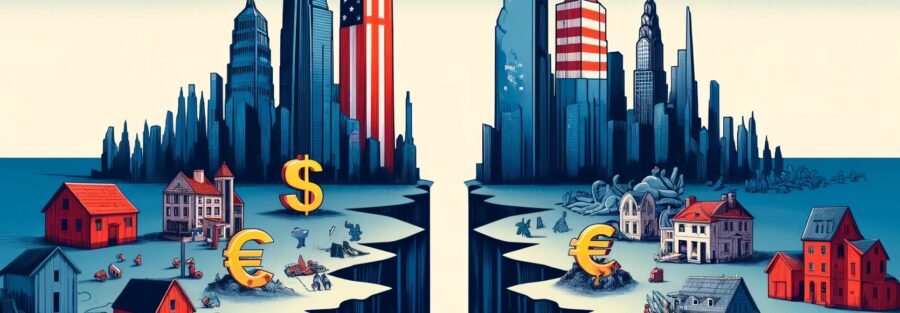Cross-border challenges are contributing to the widening gap in economic output between Europe and the U.S., a trend that has been accelerating since the 1990s, according to a study by the International Monetary Fund (IMF).
The IMF report shows that the European Union’s GDP per capita, adjusted for purchasing power parity, now stands at about 72% of the U.S. level.
Alfred Kammer, head of the IMF’s European department, explained that 70% of this disparity can be attributed to slower productivity growth in Europe. He noted that although the U.S. and the EU have similarly sized markets, Europe’s market is much more fragmented due to trade barriers between its 27 member states, unlike the seamless market in the U.S.
As a result, European companies focus on national markets rather than taking advantage of the larger European market, missing out on the benefits of economies of scale. Kammer suggested that reducing internal trade barriers within the EU to the level of trade between U.S. states could increase European productivity by seven percentage points.
A second challenge identified in the study is the lack of a unified capital market in Europe, which puts EU companies at a disadvantage compared to their U.S. counterparts when seeking financing through equity markets, forcing them to rely more heavily on bank loans.
European tech companies often struggle to secure loans because they lack the physical assets required for collateral, with their primary value lying in intellectual property and ideas. These companies typically turn to venture capital, but Europe’s venture capital ecosystem is less developed than in the U.S., and where it does exist, it tends to focus on national markets to avoid the complexities of cross-border regulations.
For the past decade, the EU has been working to create a Capital Markets Union to address these barriers to capital flows, a push that has gained momentum this year. However, officials and diplomats remain skeptical about how quickly meaningful progress can be achieved.
A third obstacle to EU productivity growth is the difficulty workers face when moving between countries in the 27-nation bloc. Unlike U.S. workers who can move easily from state to state, Europeans encounter greater barriers, as well as a shortage of affordable housing. Kammer pointed out that the costs associated with moving within the EU are eight times higher than in the U.S.
He emphasized the need to improve the EU’s single market for goods and services, noting that much of the solution lies in the hands of policymakers. In response, EU leaders recently tasked the European Commission with preparing proposals by mid-2025 to enhance the single market.





